News & Announcements
- Details
- Written by Joshua Wachtel
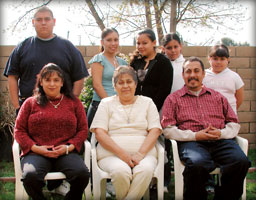 "A Family Satisfied with FGDM, from the Famly Voices Video, a co-production of IIRP & American Humane"American Humane has announced its 2012 Conference on Family Group Decision Making and Other Family Engagement Approaches: June 20-24, 2012 at the Disney Yacht & Beach Club Resort, Orlando, FL
"A Family Satisfied with FGDM, from the Famly Voices Video, a co-production of IIRP & American Humane"American Humane has announced its 2012 Conference on Family Group Decision Making and Other Family Engagement Approaches: June 20-24, 2012 at the Disney Yacht & Beach Club Resort, Orlando, FL
Join over 500 conference participants to enjoy a variety of ways to explore community partnership building, the intersection between practice and values, organizational and systems change, research and evaluation, and learning across systems — all in relation to FGDM and other family engagement approaches in child welfare, mental health, education and juvenile justice systems. This conference allows child welfare professionals from many different fields to come together for networking, training and information sharing. It is organized to meet the needs of anyone at any level within many systems who want to begin, improve or sustain engaging families in decision making.
- Details
- Written by Frida Rundell
Have you read this book? Leave a comment below.
Introduction
Reconciliation and Architectures of Commitment: Sequencing Peace in Bougainville, published September 2010, is a publication of the Peacebuilding Compared Project (http://peacebuilding.anu.edu.au) of the Centre for International Governance & Justice (CICJ) of the Australian National University (ANU), Canberra. The book is the second of three published so far. The first, Anomie and Violence: Non-truth and Reconciliation in Indonesian Peacebuilding, was published in March 2010; the third, Pillars and Shadows: Statebuilding as Peacebuilding in Solomon Islands, was published in November 2010. Links to free downloads of all three books are available at: http://epress.anu.edu.au?p=57571.
- Details
- Written by Joshua Wachtel
 Coos Bay Bridge. Photo by Too Far North (Karyn Christner) via Flickr Creative CommonsHere's a story about a restorative justice program embedded in the court system on a tribal reservation in Oregon.
Coos Bay Bridge. Photo by Too Far North (Karyn Christner) via Flickr Creative CommonsHere's a story about a restorative justice program embedded in the court system on a tribal reservation in Oregon.
[The] system is known as the Peacegiving Court. [Judge Donald] Costello was part of a team that invented it in Deschutes County, and now it's part of the judicial systems for both the Coquille Indian Tribe and the Confederated Tribes of Coos, Lower Umpqua and Suislaw Indians.
- Details
- Written by Joshua Wachtel
 Monday, the SF Examiner posted this piece "There’s more than one way to stop bullying in school" by Carlos A. Garcia, superintendent of the San Francisco Unified School District. Some excerpts of the short piece include:
Monday, the SF Examiner posted this piece "There’s more than one way to stop bullying in school" by Carlos A. Garcia, superintendent of the San Francisco Unified School District. Some excerpts of the short piece include:
When students feel connected and safe at school, they learn better. Last year, 75 percent of students surveyed in high schools and 62 percent in middle schools reported “always feeling safe at school.” I would like to see this percentage grow to 100.
- Details
- Written by Joshua Wachtel
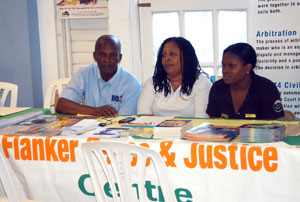 Representatives from the Flanker Peace and Justice Centre in Montego BayHere are links to two more articles from Jamaica regarding Restorative Justice Week (Feb. 5 - 11, 2012).
Representatives from the Flanker Peace and Justice Centre in Montego BayHere are links to two more articles from Jamaica regarding Restorative Justice Week (Feb. 5 - 11, 2012).
The first – Gov't Committed to Achieving Safe and Harmonious Society – includes photos from the opening of Granville Restorative Justice Centre, one of four new neighborhood centers that opened last week.
The second – Justice Ministry Provides Information at Fairs – discusses fairs organized in two of the other communities to provide information to the public about restorative justice.
- Details
- Written by Joshua Wachtel
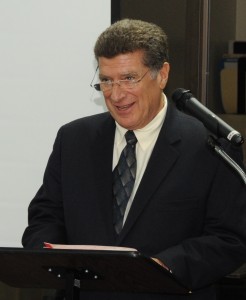 Here's a piece by IIRP president Ted Wachtel that appeared on University Business Magazine's web site:
Here's a piece by IIRP president Ted Wachtel that appeared on University Business Magazine's web site:
Campus residence hall advisors (RAs) have a tough job. But there is a tool that can make their work easier and more effective: restorative practices.
Most RAs sign on for the job because they want to help build community, provide guidance to their peers and learn what it means to be in a leadership role. RAs, however, also are charged with managing behavior. They are granted a certain amount of authority to enforce campus policies, rules and regulations.
- Details
- Written by Joshua Wachtel
 In this piece, "Less Prison, better prevention of crime," Australian criminologist John Braithwaite argues that the evidence shows in so many areas that restorative rather than punitive responses, and also evidence-based responses to preventing crime, provide a better return on government investment by reducing crime and serving the needs of victims.
In this piece, "Less Prison, better prevention of crime," Australian criminologist John Braithwaite argues that the evidence shows in so many areas that restorative rather than punitive responses, and also evidence-based responses to preventing crime, provide a better return on government investment by reducing crime and serving the needs of victims.
Braithwaite discusses prisons, policing, restorative justice, remorse, forgiveness, anti-bullying programs, fraudulent shifting of corporate profits to off shore tax havens and the US housing crisis in this terse and powerful article. Read it here.
John Braithwaite is an Australian Research Council Federation Fellow and Founder of RegNet (the Regulatory Institutions Network) at the Australian National University. He is embarking on a 20-year comparative project called 'Peacebuilding Compared', with Hilary Charlesworth, Valerie Braithwaite and Kate Macfarlane. He is also an honorary trustee of IIRP.
- Details
- Written by Joshua Wachtel
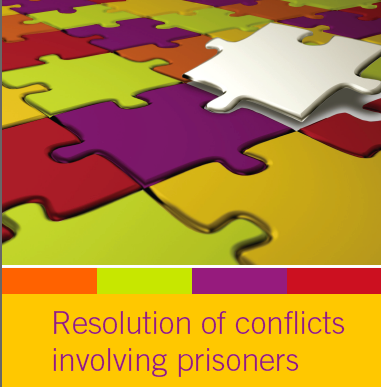 MEREPS – Mediation and Restorative Justice in Prison Settings – was a three-year project funded by the EU. According to the now freely available PDF Handbook on Using Restorative Justice in Prisons, "The primary objective of the MEREPS project is to identify ways to apply mediation and restorative practices in prison settings, with special regard to providing support to victims and enabling offenders to take responsibility. It also aims to facilitate the resolution of conflicts resulting from a crime between the victim and the offender, and the offender and their environment, including other inmates, with a view to facilitating the reintegration of offenders following their release."
MEREPS – Mediation and Restorative Justice in Prison Settings – was a three-year project funded by the EU. According to the now freely available PDF Handbook on Using Restorative Justice in Prisons, "The primary objective of the MEREPS project is to identify ways to apply mediation and restorative practices in prison settings, with special regard to providing support to victims and enabling offenders to take responsibility. It also aims to facilitate the resolution of conflicts resulting from a crime between the victim and the offender, and the offender and their environment, including other inmates, with a view to facilitating the reintegration of offenders following their release."
This project involved six research partners from four countries and had assistance from numerous practitioners in Hungary, where the project was focused. Vidia Negrea, director of IIRP affliliate Community Service Foundation (CSF) of Hungary, wrote to me about this project:
The project proved that restorative principles can be implemented in the day to day life of a prison by offering support to the staff in their work with prisoners and helping prisoners to learn new ways of dealing with their conflicts.
"Between January 17 and 19 in Budapest was the MEREPS projects’s final conference. This was the end of a 3-year international project with a pilot mediation project delivered in the Balassagyarmat Prison. Here the pilot project started with a three-days-long mediation course – Marian Liebmann was the trainer – some of the training elements are in the MEREPS Handbook.
- Details
- Written by Joshua Wachtel
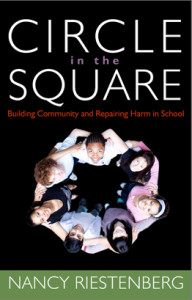 From Living Justice Press:
From Living Justice Press:
In this, her first book, Nancy Riestenberg writes warmly and with long experience about the challenges facing school communities and how restorative measures—specifically Circles—create a safer space for learning and development for all. Using stories direct “from the hallways,” she brings heart to subjects that are often divisive and controversial: bullying and other violence, suspension, drug use, staff conflicts, and more. Throughout the book, Nancy’s focus is on strategies that actually work for the whole school community: students, parents, administrators, teachers, and the community in which they live.
Click here to read reviews and order.
For a previous interview with Nancy Riestenberg, Prevention Specialist in the Minnesota Department of Education Safe and Healthy Learners unit, by Laura Mirsky in the Restorative Practices eForum, click here.
- Details
- Written by Joshua Wachtel
Here are two brief excerpts from an article by Sara K. Satullo that appeared last Friday, February 3 in the Easton Express-Times:
Bethlehem Area Social Studies teacher Joanne Widdersheim gathered 10th-graders in a circle Friday.
She tasked them with revisiting a question she posed to them at the start of the semester: Where do you want to be in 30 years?
Students had a few minutes to draft a Time magazine cover with a witty slogan. Widdersheim teased students, pressed them to work faster and knew when to lay off when a shy student needed more time. She also had them laughing hard.

Restorative Works Year in Review 2023 (PDF)
All our donors are acknowledged annually in Restorative Works.
